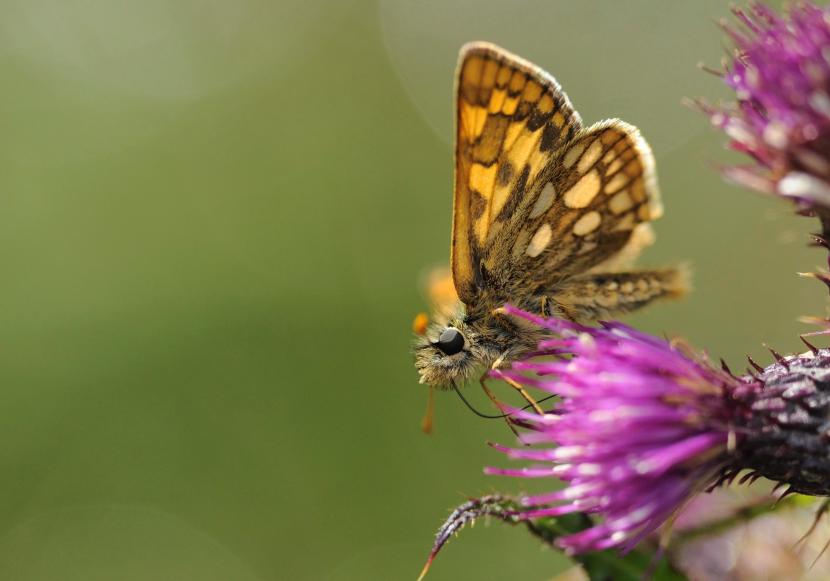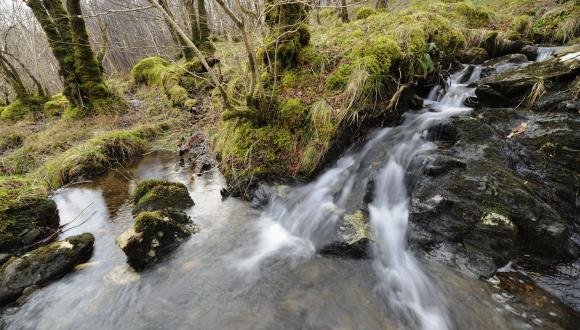Glasdrum Wood NNR - Reserve leaflet
Welcome to Glasdrum Wood National Nature Reserve
This Reserve, managed by NatureScot, is a fine example of one of Scotland’s Rainforests, a habitat rarer than tropical rainforests and important on a global scale.
The ancient woodland cloaks the slopes of Beinn Churalain, rising steeply above Loch Creran. The woodland trail climbs up through the ancient oak, ash and hazel trees. Ferns sprout from rocky crevices and lichens and mosses cling to branches. Butterflies flit among the flowers in open spaces where sunlight can reach. In spring and summer the wood is filled with the chorus of bird song. Wrens, chaffinches and wood warblers are a few of the birds you can see and hear.
Getting there
Contact information
- Email [email protected] or tel 0131 316 2690
- Follow @ScotlandsNNRs www.nnr.scot
- Support this NNR at www.nature.scot/donate-nnr

Scotland’s rainforest
Under the influence of the mild, wet Atlantic climate found on the west coast of Argyll, these special woods have developed luxurious carpets of ferns, lichens and mosses and a unique range of associated species. These non-flowering plants do not have roots and rely on water, from rainfall and streams, for their survival.
Lichens to thrill
Glasdrum Wood is one of the best sites in the UK for lichens. Many of them have significant conservation importance in Europe, including the nationally scarce Norwegian specklebelly which can be spotted on hazel trees close to the path.
Lichens come in many different shapes, colours and sizes and cover many of the trees. More common lichens such as lungwort hang down from branches overhead.
A lichen is not a single organism. In fact it is made up of a fungus and an algae which help each other to survive.
Butterflies
This is a very special place for butterflies. With its steep southerly aspect, Glasdrum’s many small woodland glades and larger open areas act as suntraps warming up quickly in good weather. These conditions allow butterflies and other insects to thrive. More than 20 different species of butterfly live here, including the rare pearl-bordered fritillary and the chequered skipper. The higher slopes above the wood are home to the mountain ringlet, Scotland’s only true mountain butterfly.
June is the best month to spot the beautiful chequered skipper. This small fast-flying butterfly likes the wet grasses found in the small glades and underneath the electricity pylons. In Britain, this butterfly’s range is confined to North Argyll and Lochaber, centred around Fort William. It has also recently been reintroduced to the east of England.

Human influence
The wildlife found here today reflects the past and present management of the wood. People have had close links with the woods at Glasdrum for centuries. During the 17th Century trees were rotationally coppiced for charcoal burning amongst various other uses. The flat remains of charcoal platforms can still be seen in the wood today. Grazing livestock have historically helped to keep the wood open, creating ideal habitats for butterflies.
Today NatureScot manages the woodland to encourage natural tree regeneration.
Achieving this is a balancing act. Mosses like the shade of trees while butterflies and lichens favour more open areas where light penetrates. Young trees are protected from deer to allow saplings to reach maturity and ensure the woodland remains healthy in future years.

Need to know
Find out more on
Reserve map
Trails
Woodland Trail
Climb up through this atmospheric, mossy ancient woodland and enjoy occasional views across Loch Creran. Look out for rare butterflies, woodland birds and signs of previous woodland management. There are occasional benches.





